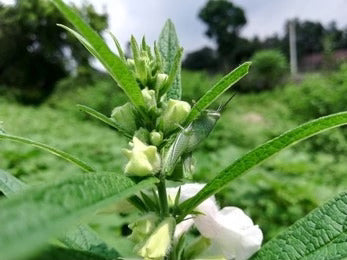To our knowledge, Ayurveda is the first circadian therapeutic technique that offers restored admittance. The path to a settling entity that makes a distinction is held by Ayurveda. As a result, this antiquated method of management pledges to make the future more pleasant for each and every person on the planet. The guidelines of this antiquated insight approach informed us that life's web is intricately interwoven. Ayurveda's science and art combine to balance our internal and external environments. Recognizing when quality has become excessive or insufficient is the foundation of Ayurvedic treatment, as this is known to create an imbalance in the doshas and ultimately result in disease. In order to correct those unbalanced doshas, Ayurveda uses the opposite characteristics. This age-old procedure employs a number of techniques to regain control over tissues and restore the doshas to their original fundamental forms. The tenets of this age-old therapy serve as a reminder that all aspects of life are interconnected, therefore preserve your health and wellbeing to avoid contracting any diseases. This essay will cover the herb Til, which is utilized in every home for a variety of functions including cooking, medicinal purposes, auspicious works, and much more.
General Information
The earliest oilseed crop, Til is most known for being the variety of sesame utilized in industrial, medical, and nutritional contexts. It is highly nutritious and has multiple uses, such as being edible and cosmetically applied. This herb is well-known for its til, or tal in Gujarati, gubbulu in Telugu, and sesamum in English. Sesame seeds are used in a variety of preparations since, in addition to being edible, they are also used to make soap, as a vehicle for medications, paints, illumination, and lubricants. Because its seeds are strong in calories, carbs, and other nutrients, they are very helpful for frail patients. Sesame benefits greatly from enhanced nutritional status and grows well when sweet corn is farmed. This herb bears fruit from December to January and blooms from October to December.
Special Note About This Plant
- Sesame seeds come in two varieties: a white variety and a black kind. They claimed that the white sesame variety is of medium grade, the red and brown color varieties are of inferior quality, and the black sesame type is the greatest for all purposes.
- Sesame seeds contain vitamin K in addition to magnesium, sulfur, calcium, and many other elements. Vitamin E makes them a natural and effective antioxidant.
- Sesame seeds, also referred to as the "queen of oil seeds," are a rich source of B vitamins and an excellent source of protein for growing muscle.
- This herb is considered to be a big Vata anulomak in nature and is mentioned in both the Sushrut and Charaka Samhitas, where it maintains its due place.
- Its popular formulation provides a clear explanation of its qualities and indications in Bhav Prakash, also known as Bhaishajya Ratnavali.
Systemic Classification
- Botanical Name - Sesamum indicum
- Family - Pedaliaceae
- Genus - Sesamum
- Species - S. Indicum.
Habitat
- This upright annual plant in the Pedaliaceae family is grown for its seeds, which can reach a height of three feet and are positioned in opposition to the leaves.
- This plant has large, lanceolate leaves that narrow towards the base of the stem.
- The mouth of the tubular flowers has four lobes. Its blossoms can have a variety of colors, including white, purple, or yellow. In India, the white variation is the most widely found.
- Its fruit is sectionally cut, pubescent, and rectangular.
- Sesame seeds are oval in shape, thinner at the eye, and have a smooth, ribbed coat covering. They come in a wide variety of sizes.
- This plant, which blooms from October to December and bears fruit from December to January, is primarily found in the tropical regions of Africa and India.
Ayurvedic Properties
|
|
Hindi / Sanskrit |
English |
|
Rasa (Taste) |
Madhur |
Sweet |
|
Guna (Physical Property) |
Guru, Snigadh |
Heavy, Moist |
|
Virya (Potency) |
Ushna |
Hot |
|
Vipaka (Post-Digestive Taste) |
Madhur |
Sweet |
Effects On Doshas
- It vitiates the Pitta Kapha dosha and balances the Vata dosha
Practical Uses
- This plant supports the Vata dosha because of its guru, snigadh, Madhur, and ushna Guna.
- This helps with lubrication and is effective at relieving pain and healing old wounds.
- It also helps to improve the neuro-muscular structures and functions as a brain booster.
- This herb strengthens gums, increases digestive fire, and is useful for moisturizing the skin and body as a whole because of the snigdha guna.
- Amazingly high in fiber, sesame seeds help in digestion, support heart health, and fend off diabetes mellitus.
- Natural substances found in seeds, such as oxalates, support strong bones.
- This can stop kidney or heart illness because of its numerous anti-inflammatory, antioxidant, cardioprotective, and liver-protective properties.
- Higher triglyceride and cholesterol levels can be managed using sesame seeds.
- Additionally, sesame seeds may strengthen the body and lessen oxidative stress on the blood and other vital organs.
- Since vitamin E is widely distributed, it is beneficial for all skin types.
- This is high in protein, which helps people with liver, kidney, or malnutrition maintain a healthy body composition.
Part used
Seeds and their oil
Dosage
- Three to six grams of sesame seed powder is a reasonable amount to consume.
- This plant's oil can be consumed in doses of 10 to 20 ml.

